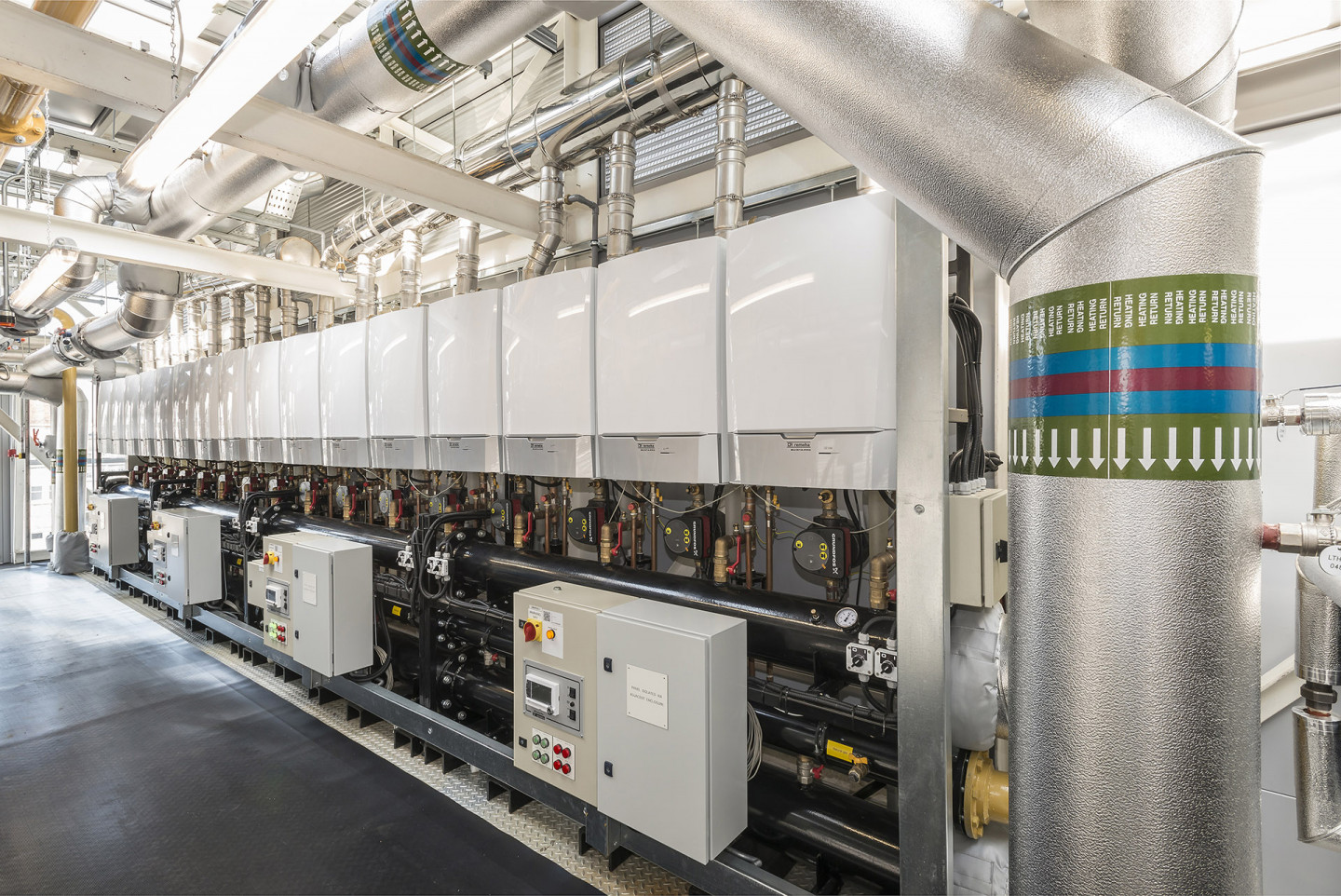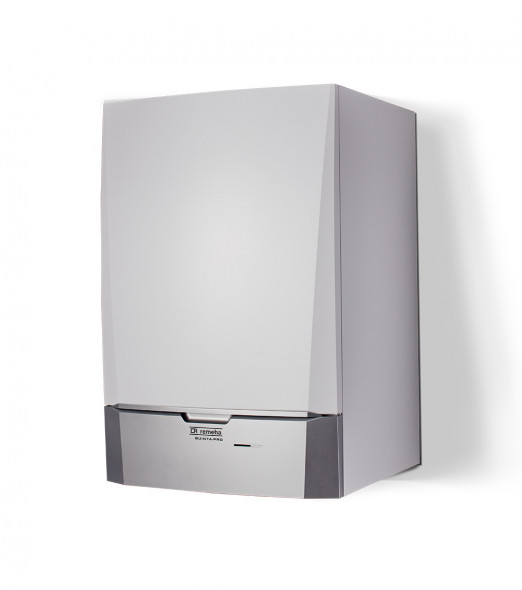Quinta-essentially high performance, bespoke heating system for Royal Academy of Arts
16 Quinta Pro 115 boilers on a bespoke-designed Remeha rig system are successfully achieving the high environmental standards of domestic hot water and space heating required by the Royal Academy of Arts at Burlington House in a compact, flexible, highly-efficient solution.
As part of its extensive infrastructure masterplan, the Royal Academy of Arts (RA) has consolidated the heating generation plant across its estate within one newly-designed central plant room. The overarching requirement was to develop a high-efficiency, future-proofed heating system across a unified RA site.
Art galleries consume significant amounts of energy to maintain the internal environments necessary to protect and conserve their collections.
So for the RA’s Head of Engineering, Steve Watson, and Senior Project Manager, Kyle Peters, creating the best environment experience and preserving the art works on display was a fundamental concern. Their key requirement was for a long-term solution to improved efficiency and reliability through clever design. Added to this was the need to ensure the close-controlled conditions required by government identified standards.
The challenge for consulting engineers Arup and principal contractor CBRE, who appointed Remeha, was to reconcile achieving the stringent environmental standards with the need to reduce energy use for more sustainable operation
Key to this was the refurbishment of the heating plant supplying Burlington House. This building, home to the RA since 1867, had previously relied on six large-output ageing boilers located in the original basement plant room for its heating.
Vasilis Maroulas, Associate at Arup, described the thinking and the wider benefits of the project for the RA:
“The new boiler plantroom consolidates the heating generation across the RA Estate, centralising the maintenance regimes, liberating space for use as back of house storage and RA staff offices, and enabling the implementation of the critical electrical infrastructure upgrades.”
To meet the building’s flexible heat demand requirements, Arup specified that the boiler replacement should be achieved using 16 Remeha Quinta Pro 115 boilers. The boilers can provide a total heat output of up to 1.8MW to meet peak demand with the ability to be turned automatically down as low as 17kW when required for more efficient energy use. The design called for a large DN200 diameter primary boiler loop pipe to connect to the existing distribution system.
The RA’s new plant room is situated above the Sackler Wing of Galleries, on the roof of Burlington House. A light, compact space with floor to ceiling glazing at either end, its long, narrow dimensions presented an interesting additional challenge for CBRE.
Working with Arup and CBRE, Remeha provided a bespoke, off-site fabricated rig solution that would meet the specific requirements of the project and site. Fully documented and factory tested, the rig has provided a high-quality solution to achieving maximum turndown ratio and more sustainable operation. The single delivery of boiler plant and increased ease of installation offered by the rig greatly reduced site time at the RA, minimising disruption to the building users.
To accommodate the plant room constraints, the boilers were arranged in an in-line format. Arup and CBRE specified designing the rig in four separate modules to enable and facilitate positioning within the roof plant room. Each module comprised four Quinta Pro 115 units, shunt pumps, isolation valves, control valves and safety valves plus flow and return header pipework.
The individual modules, all featuring lifting eyes for easier manoeuvrability, were crane lifted through the limited opening in the roof structure into the plant room. As required, packaging was designed to be retained during the lifting process to suit CBRE’s plantroom build programme and assist in keeping the galleries fully operational during construction.
Each module also incorporated Remeha iSense Pro controls, pre-wired within control panels with the requisite safety interlocks and shut off switches as specified by Arup. The controls wiring was bespoke to this project to accommodate the specific requirements for additional pump control, monitoring and water treatment functions. To meet Arup’s specific requirement, the control panels were provided with interconnection boxes to add flexibility for future repositioning if required.
The rig itself was specially designed by Remeha in conjunction with Arup to accommodate the specified additional orifice plates, test points, expansion vessels and increased shunt pump sizes for each boiler on the frame.
The project was a collaborative effort with Remeha working closely with Arup and CBRE to ensure a smooth, efficient installation providing the mechanical and control functionality required by all parties.
The bespoke rig meets all consultant, contractor and building user requirements. The multiple-boiler, weather-compensating system maximises condensing operation and efficiencies. The space heating and hot water provision is more reliable, more secure and highly efficient due to the increased modulation. The boilers interface with the existing heating system, providing a flexible system that meets current demand while future-proofed for all future needs.
Aesthetically, the compact arrangement matches the dimensions of the room while ensuring adequate space for the additional Remeha boilers serving the Burlington Gardens site. The result is a design that meets the stringent environmental standards required by the galleries at the RA, achieving constant volume and consistent temperatures to protect and conserve the priceless works of art on display.
Bespoke rigs:
- Designed and manufactured to meet the precise requirements of each individual project offering increased design flexibility
- Installation is quicker and easier as boilers are delivered on site in a pre-assembled wheeled unit. This reduces downtime and on-site labour.
- The perfect solution for refurbishment projects with limited time for completion
- Quality control is also improved as the pre-configured unit is pre-tested and delivered as a whole system, rather than individual components.


